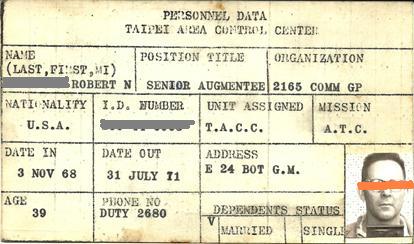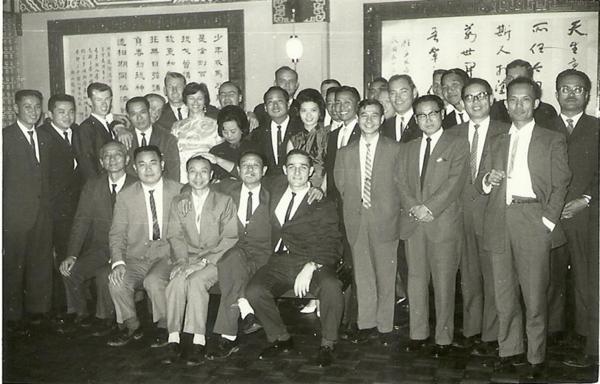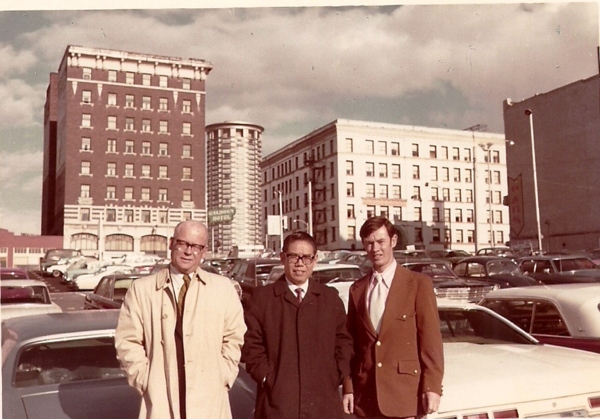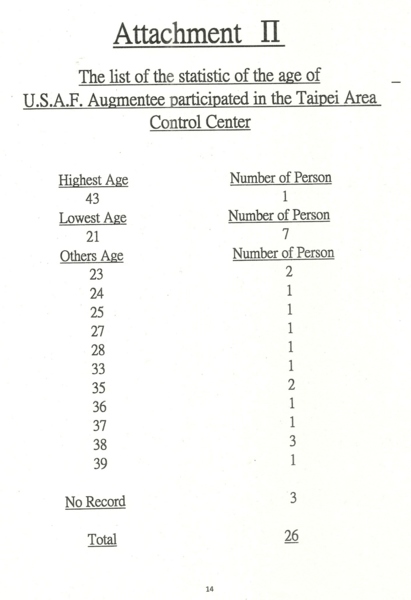 
 字體:小 中 大
字體:小 中 大 |
|
|
|
| 2014/03/01 15:25:05瀏覽976|回應0|推薦0 | |
A Look Back at U.S. Air Force Augmentee Participation at the Taipei Area Control Center During the Vietnam War Dawn Lee Former chief of Taipei Area Control Center of Civil Aeronautics Administration R.O.C. Between 1965 and 1975, during the ten long years of political and military conflicts between North and South Vietnam, immeasurable damages were done to the people and land of that country. A number of nations around the world were also drawn into the conflict, chief among them the United States of America. Due to the geographical distance between the U.S. mainland and Vietnam, for operation logistics, the U.S. not only relied on its Pacific territories such as Hawaii and Guam, but also certain allies in the neighboring Southeast Asian region. Although the war ended with the American troops beating a hasty retreat and the Communist North Vietnam forces taking over the entire Vietnamese territory, the various supports given by its allies that greatly facilitated the American war efforts nonetheless had made it a unique case worthy of a historical footnote. As the world-renowned “unsinkable aircraft carrier” of the western Pacific, with its close ties with the U.S. and its geographical proximity to Vietnam, Taiwan was strategically positioned at the pivotal point for the U.S. war operations in Vietnam. As in any modern war, air transportation played a crucial role in this effort and the U.S. agencies made every possible use of Taiwan’s various facilities and resources to their best advantage. In doing so, the U.S. administration and its armed forces endeavored to form a closely-knit working relationship with the Republic of China government, its military branches as well as its various civilian organizations. This was also the chance for Taiwan to reciprocate for the continued warm friendship and assistance offered by the American government and its people. The U.S. selected various military and civilian airports in Taiwan to be used by its air force. The selected facilities were then improved and/or expanded with U.S. assistance. Among these facilities, the Ching Chuan Kang Air Base (CCK AB) near Taichung was established especially for servicing the large number of KC135 long-range aerial refueling aircrafts. These aircraft were used to rendezvous with, in the airspace southwest of the southern tip of Taiwan to refuel the B-52 bombers based in Guam on their way to and from their missions in Vietnam. The same airport was also designated as a backup service base for emergency landing and repair of military aircraft on missions in Vietnam. Meanwhile, any and all airports in Taiwan were also offered for takeoff and landing of American military or civilian air transports as necessary. According to a bi-lateral agreement to facilitate operation, any on duty American aircraft, military or civilian, in the Taipei Flight Information Region (Taipei FIR) en-route to or from the U.S., with a flight number preceded by “MOTHER HUBBARD”, may freely land or take off at any airport without submitting for a permit. Taiwan was also designated by U.S. Air Force to be one of its personnel R&R (rest and recreation) districts. This has greatly boosted the tourist, recreation and entertainment industries in the island at the time, and to a certain extent, helped to launch the rapid growth of Taiwan’s economy from then on. During the nearly exponential growth of air traffic at the time, Taipei Area Control Center sustained the greatest of the impact. Due to the sudden traffic increase, controllers’ workload quickly went up several folds. The inadequacies in personnel, equipment and procedures became apparent; especially the shortage of specially trained personnel could not be readily remedied. After negotiating with the USAF 13th Air Force then stationed in Taiwan, it was agreed that U.S. Air Force air traffic controllers would be drafted to perform support duties at Taipei Area Control Center. It was then found that the training, certifying and interning of new controllers before they can be assigned to regular work posts are too time consuming. After considerable deliberation, it was decided that U.S. Air Force personnel would only be responsible for communication and liaison duties with American flights but not for air traffic control duties. In order to facilitate the activities of American military aircraft, the original North Sector and South Sector in Taipei Flight Information Region, under the jurisdiction of Taipei Area Control Center, were expanded into three, i.e. the North, the Central and the South sectors; the South Sector was to cover the airspace over the South China Sea adjacent to the southern tip of Taiwan.
This sector was assigned exclusively to handle ground-to-air communication and logging of the position reports for U.S. military aircraft. This decision was made due to the concentration of U.S. military aircraft activities in this area and the predominately east and west flight directions, as well as sparse civilian air traffic except for transiting airline flights. In case any airliner requests altitude change, local air traffic controller would be required to perform the duty. In the ensuing long years of seamless collaboration, hardly any problem had arisen. Due to the above-stated necessities, in July 1968, the United States Air Force dispatched its first group of personnel, named U.S.A.F. Augmentees, to station at Taipei Area Control Center. The total number of augmentees on record numbered twenty-six(26) (See attachment 1). The first assigned augmentee was John Rehr, who arrived on July 22, 1968. The last ones to leave were James Widenhouse and George Dube, both on June 20, 1973. Altogether, these American controllers were stationed at the Center for a period of five years, one month and two days. Such a long, long time! During this time, air traffic controllers at the Center, either Chinese or American enjoyed truly harmonious relationship.
For the comfort and convenience of its American controllers, the Center continued to provide and help prepare fresh coffee every day for their consumption at any time at work. Local government air traffic control responsible managers often threw dinner parties for their American colleagues after shifts. These acts of hospitality surely made the visiting controllers feel really at home. From time to time, local controllers also join their American colleagues at their celebrations. There was surely abundant conviviality. (See attached picture)
Director Tien of ATSO hosted a Welcome dinner Party for U.S. controllers with local controller. During the period when preparation was in progress to ready the Center for upcoming participation of U.S. air traffic controllers, Colonel Lai Sun-yen was Director General of R.O.C. Civil Aeronautics Administration, he left the post on December 10, 1968 and General Mao Ying-chu succeeded him, thus the period of time when American air traffic controllers were present at the Center spanned parts of the tenures of two civil aviation administrators. What an interesting coincidence! The Air Traffic Service Office (ATSO) , a subordinate branch under the Director of Tien Wen-chao also easily transferred its duty to Yang How-ming, Director of Air Navigation and Weather Services (ANWS) . In the case of the officer directly responsible for Taipei Area Control Center (TACC), Chief Dawn Lee was on top of it all by himself, from the program’s inception till its end. His is really such a rare case. So, in November 1972, during his official visit to Seattle Air Route Traffic Control Center, Chief Lee of TACC unexpectedly met a former U.S. military air traffic controller who had stationed at Taipei Area Control Center yearly before. (see attached picture)
Chief Lee of TACC encountered one of U. S. controller(right) at Seattle City while visiting Seattle ARTCC in November, 1972
|
|
| ( 不分類|不分類 ) |















